The Best Traditional Foods You Have to Try in Spain
January 18th, 2021, Posted by travelwith2ofus

🔽 DEAL ALERT!
Get up to 20% off selected hotels!
![]()
![]()
Spain is not only well known for its breathtaking sandy beaches, architecture, and daily siestas. If you're visiting Spain, you must try some of its traditional food and drinks.
Spain's cuisine has a lot of influence from many different cultures. The Greeks introduced olive oil, the Jews, Romans, and Carthaginians integrated their cooking elements into the local foods, and the Phoenicians introduced their sauces.
However, it was the Moors that had the most significant impact on Spanish gastronomy.
The Moors introduced rice, saffron, cinnamon, light seasonings, and fruits into the Iberian diet, alongside a combination of meats and fish with nuts.
Ideally, the succession of cultures in the Iberian Peninsula left a lasting mark.
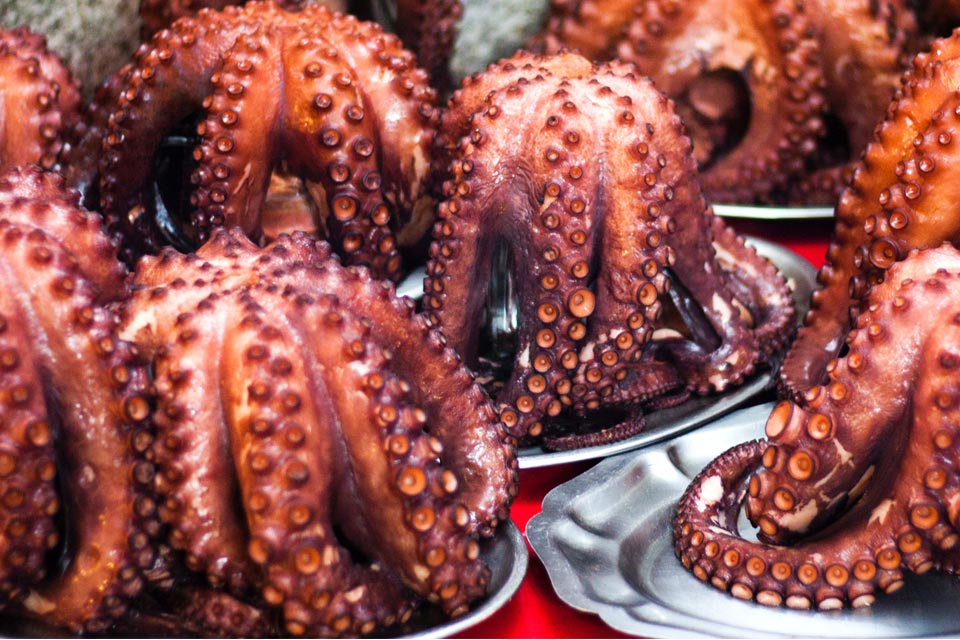
Traditional Dishes
No trip to Spain would be complete without you tasting traditional dishes in the Spanish capital as well as other cities, villages and towns.
Some of them include cocido madrileno (winter dish), huevos rotos, bocadillo de calamares (famous sandwich), callos a la madrilena (popular winter dish), churros con chocolate, jamon iberico, oreja a la plancha, pincho de tortilla, pulpo a la gallega, and, of course, paella.
As you disembark from your plane and leave the airport, a variety of restaurants and bars will greet you.
In 2010, a 'La Caixa' economic study reported that Spain registered a staggering ratio of one bar to every 129 Spaniards. From this figure, we can deduce that the Spanish take their food and drinks seriously.
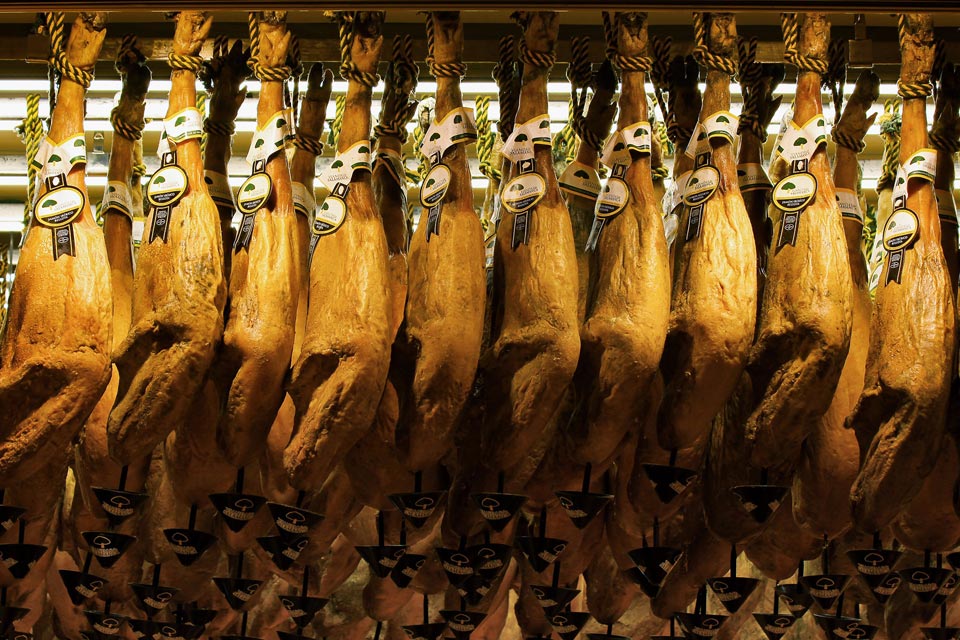
Bars And Restaurants
Most bars in Spain double up as restaurants and vice versa. These places serve as social establishments, meeting joints, venues to watch football games, play games, chat, eat, drink, party, among other things.
Typical bars boast an array of tapas or pinchos that are small portions of food. The pinchos and tapas vary by region, can be added to your price list, or offered free.
You may also like:
easy caribbean cocktails recipes to make at home
If you're looking for some easy Caribbean cocktail recipes using just a few ingredients then have a look at several of our favourites.

mediterranean cuisine
Spain's Mediterranean cuisine is characterized by its large assortment of ingredients. Here, meals include beans, vegetables, fruits, legumes, rice, other grains, cheese, yogurt, poultry, extra virgin olive oil, various types of meats, lots of seafood, and wine.
Spaniards brag about how they have the most healthy and sweet food in the world. Mediterranean cuisine serves a traditional rich diet considered among the healthiest in the world.
One thing almost every visitor will quickly discover is the dining timeline used in Spain. Understanding the timeline is necessary so that you do not miss out on any local cuisine.
Spanish Breakfast, lunch and Dinner
Spanish Breakfast: Also known as el Desayuno, breakfast in Spain is usually a light meal. However, a study done by the Spanish Ministry of Agriculture found around 94.4% of Spaniards have breakfast.
There are coffee shops that offer breakfast until 11 am, while others offer it as late as 1 pm. Hot chocolate, freshly squeezed orange juice with a croissant, coffee, pastry, or toast with jam are some breakfast choices.
Churros, fried fritters with sugar, is another very common breakfast pastry in many bars. Bread with cold meats and sausages, toast with olive oil, and toasted bread with tomato are some other favorites.
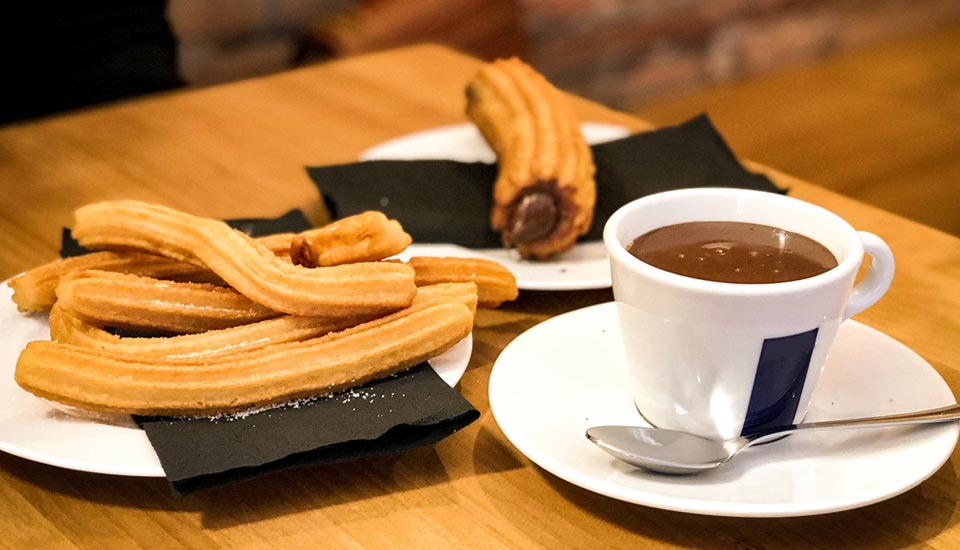
Spanish Lunch: In Spain, lunch (La Comida) is the most important meal. It is usually between 2 pm and 4 pm. It is the largest meal of the day and begins with soup or salad.
A second course includes fish or meat and followed by pastry, dessert, or fruit. Coffee, shots of traditional liquor or brandy are enjoyed at the end of the meal. Bread is always available.
In cities like Barcelona and Madrid, the lunch period is slowly changing with shorter periods and no siestas.
Spanish Diner: Since the lunch meals are heavy, most workers stay on until around 8:00 pm. Ideally, between 4:00 pm towards dinnertime, most of them will have a snack before dinner.
Although dinner (La Cena) is similar to the meal taken during lunch, it is slightly lighter and served from 9:00 to 10:30 pm. During the summer, do not be surprised to see most Spaniards taking their dinner as late as midnight.
Dinner might include seafood or roast lamb or chicken with fried potatoes or rice. A popular option is an omelet and fish with a green salad on the side.
Of course, you must try Paella, which is the national dish of Spain. If you love seafood, then you will love Paella de Marisco (seafood Paella). The best time to have Paella, according to locals, is during lunch, especially on Sundays.
Paella is made using a range of shellfish (such as clams, shrimp, lobster, and crab) and vegetables (like peas, asparagus, and tomatoes).
Chorizo, long grain rice, and chicken or rabbit are some of the meats used. Onion, wine, garlic, broth, sweet red pepper (pimiento), and saffron add flavor to the dish.
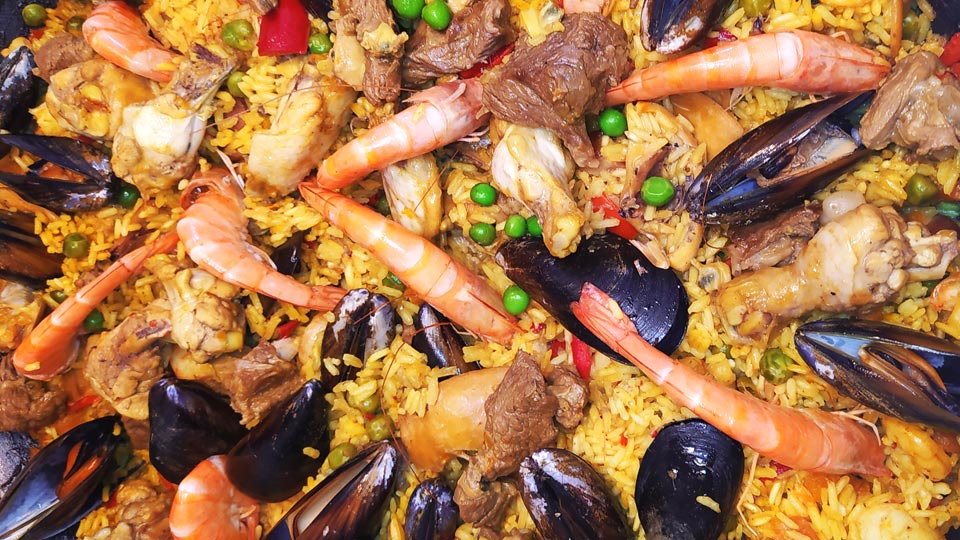
What Wines should you expect in Spain?
With more bars per capita than there are in any other EU country, wine is an integral part of Spain's gastronomic culture.
Choosing a local Spanish wine can be a tad overwhelming. Because the climate varies from one region to the other, and wines are shaped differently from region to region by the weather, the options are endless.
Some of the wines you can readily taste in Spain include Cava, Spanish white wines (including rich and textured, fresh and salty), and Spanish red wines (Tempranillo, which appears under Tinto de Toro, Cencibel, Tinto Fino, Tinto del Pais, and Ull de Llebre) from Ribera del Duero and Rioja regions.
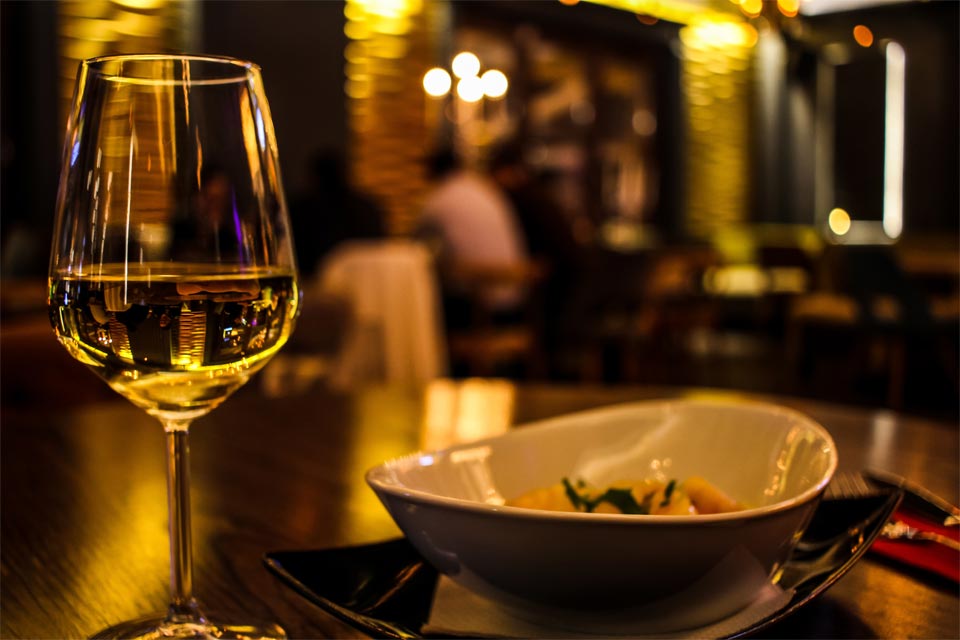
We have links to product and services from our affiliates. We may receive compensation when you click on those links, at no cost to you of course.
Cameras And Accessories to capture the moment
These cameras and accessories will help you capture those memorable moments when visiting Spain.
Recipe
Paella de Marisco (seafood Paella): Recipe from Foodal.
Paella de Marisco is a favourite in Spain especially around summer.
You will need (Serving sieze 2):
- 4 teaspoon olive oil
- 3 large onions, finely chopped (about 3 cup)
- 2 large tomato, finely chopped
- 2 large red bell pepper, finely chopped
- 4 cloves garlic, minced
- 3 cup Spanish paella rice (Bright Sabroz, Bomba, or Calasparra)
- 1/2 cup dry white wine
- 68 ounce seafood or vegetable stock
- A generous pinch of saffron threads
- 1 1/2 teaspoon sea salt
- 7 ounce roasted red peppers, drained and chopped
- 20 mussels, scrubbed (do not use any that have opened)
- 20 littleneck clams, scrubbed (do not use any that have opened)
- 14 ounce skinless, boneless firm-fleshed fish (like monkfish or cod), cut into bite-sized pieces
- 20 large shrimp/prawns
- 1/2 cup fresh peas (or frozen, thawed, and drained)
- Chopped fresh parsley, for serving
- Lemon wedges, for serving
How to make:
- Add oil to a paella pan over medium-high heat. Add onions and cook, stirring occasionally, until softened, about 5 minutes. Stir in tomatoes and bell pepper. Continue to cook for 2-3 minutes, until peppers have softened.
- Stir in garlic, and saute for another minute. Add rice and stir to combine. Toast the rice in the pan, stirring occasionally for about 2-3 minutes, until fragrant. Stir in wine and bring to a boil, and continue boiling for 1 minute.
- Stir in stock, saffron, and salt. Turn the heat down to medium-low and bring the mixture to a simmer. Cook until half of the liquid is absorbed, gently moving the pan around occasionally to make sure the rice cooks evenly. This will take about 15 minutes.
- Stir in roasted red peppers. Nestle all of the seafood except the shrimp into the rice. Make sure everything is tucked in and evenly distributed.
- Continue to cook, simmering for 20 minutes, until the seafood is cooked through and the rice is al dente. Add shrimp and peas in the last 8 minutes of cooking, distributing them evenly in the rice.
- Once everything is cooked through, turn the heat up to high for about 30 seconds. This will toast the rice on the bottom of the pan. Keep an eye on it – you’ll be able to smell it when it’s toasted.
- Remove from heat and let rest for 5 minutes. Garnish with chopped parsley and lemon wedges before serving.
-
For more recipes, please visit Foodal.
What are your country's New Years' traditions? Which is your favorite?
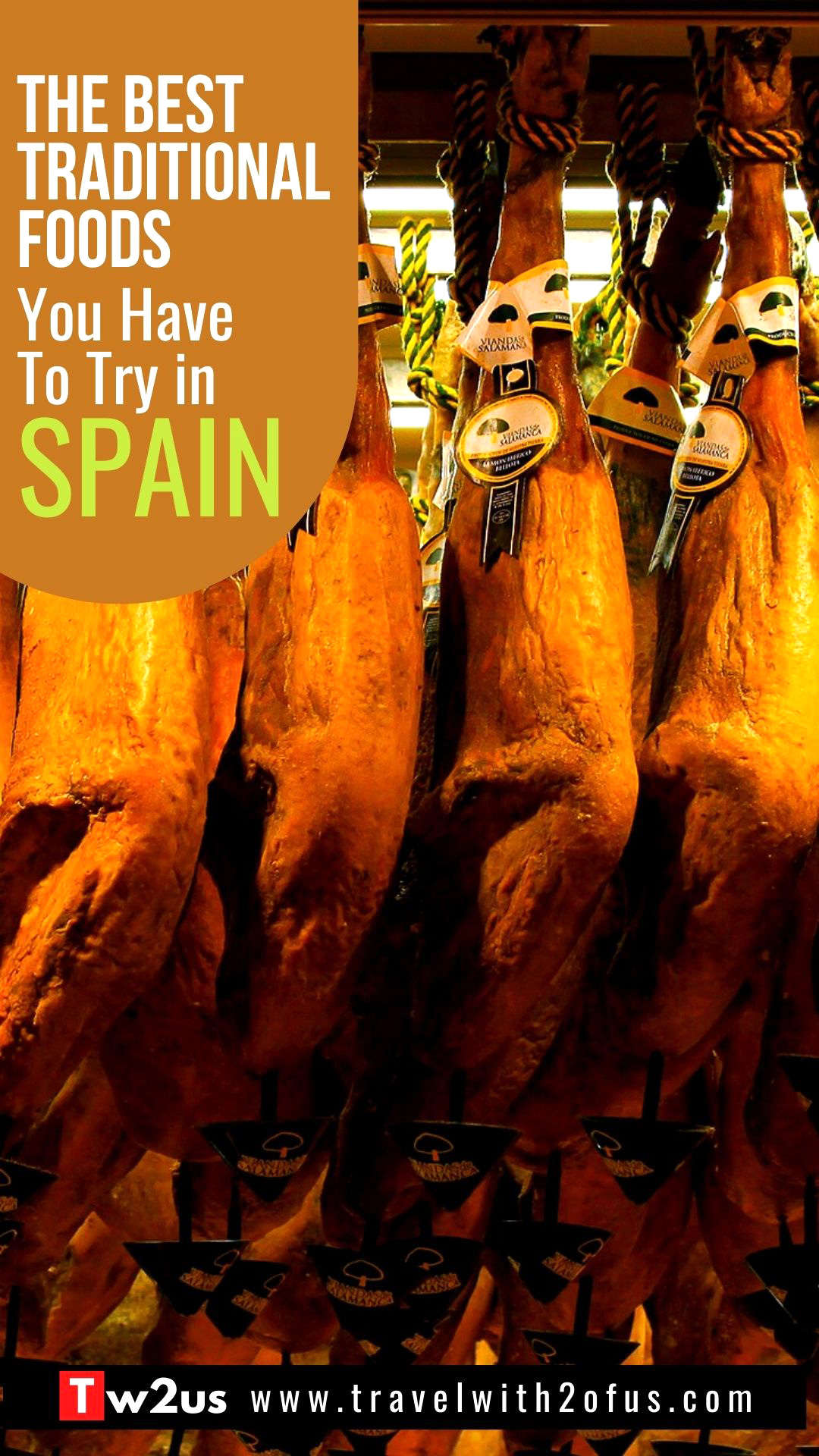
You may also like:
FASHION





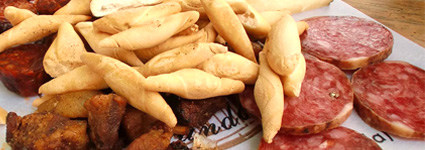 The Best Traditional Foods You Have to Try in Spain
The Best Traditional Foods You Have to Try in Spain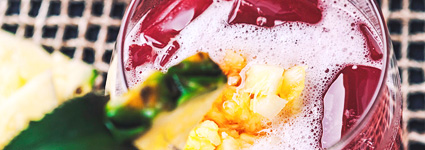 How To Make 4 Of Sandals Resorts Signature Cocktails
How To Make 4 Of Sandals Resorts Signature Cocktails Recipes Of Caribbean Cocktails That Are So Easy To Make
Recipes Of Caribbean Cocktails That Are So Easy To Make Comfortable Spring fashion for travel
Comfortable Spring fashion for travel Casual And Comfortable Sandals For Travel
Casual And Comfortable Sandals For Travel